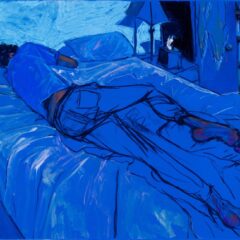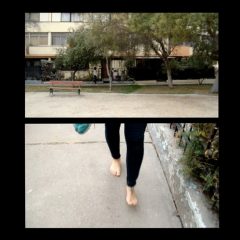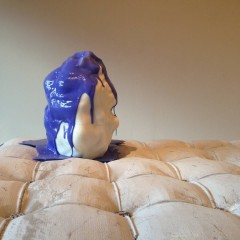[Michael searches for meaning in a collection of Minimalist mementos, finding that some pieces succeed in surprising ways. — the Artblog editors]
Ever since the first artists painted hunting scenes on the cave walls at Altamira, Spain, artists have continuously sought to capture the essence of memory or emotion. FJORD Gallery’s General Objects examines the nature of memory- or emotion-linked imagery and the impacts of a Minimalist aesthetic upon the relationship between the artwork and what it means. The show manifests itself as a body of disparate artworks unified by a widespread Minimalist aesthetic.
Despite the sizable roster of artists behind General Objects, Danny Floyd curates the exhibition to appear like a cohesive domestic scene recognizable to most viewers. Commonplace items like a faux fridge, a milk crate filled with record albums, and easel paintings on the walls populate the space in what might resemble a real home.
Muddled memories
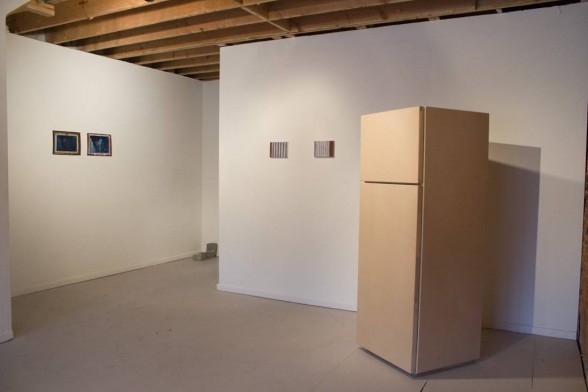
In his essay for the show, “Back to the Things Themselves,” writer Joshua Michael Demaree speaks of the complex nature behind our personal attachment to individual objects. The essay sets the tone for the exhibition and frames General Objects as a collective attempt by nine artists to redefine the significance of particular items and the ways in which we interpret them.
At one point in the text, Demaree begins discussing trees. Place a tree in the center of an otherwise empty gallery, and each viewer will have a different description of what the tree is. He claims that with modern technology and our resulting access to massive amounts of information, we have further complicated and muddled the significance of everyday things, like trees.
And, in keeping with Demaree’s text, many of the artworks on display muddle things. There are works that resemble what they reference in the real world, like a refrigerator, and those whose origin, use, and reference is completely obscure.
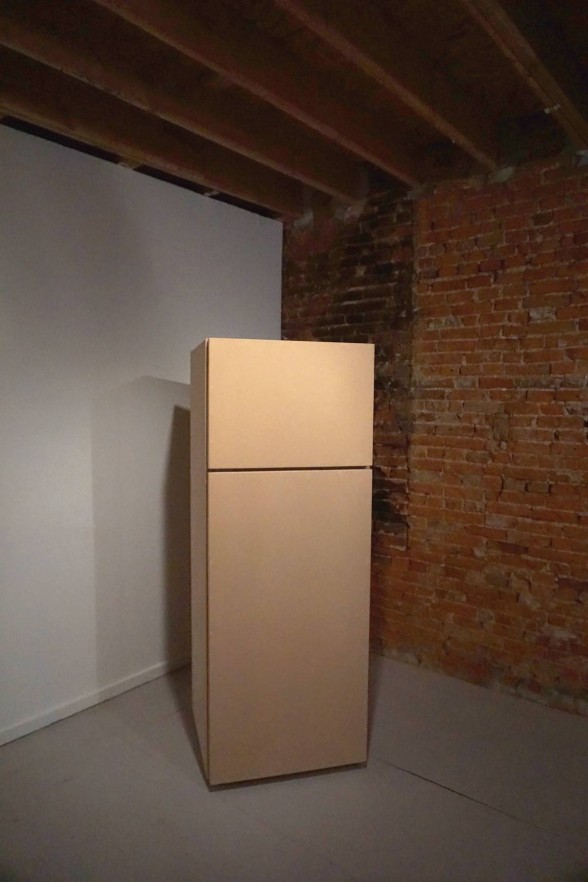
“Fridge,” by Kyle Nilan, stands out amongst the work in the front room due to its large size and the immediacy with which I could recognize the “appliance”.
Is this object actually a fridge? No. It is a hefty, brown box made of MDF; yet Nilan is able to transcend the association between a fridge and a big metal box. It is absurd to create a fridge out of MDF because it innately lacks functionality. In doing so, Nilan manipulates the material and function of a “fridge” while retaining the relationship between the object’s physical form and its meaning.
Generally engaging, yet intentionally vague
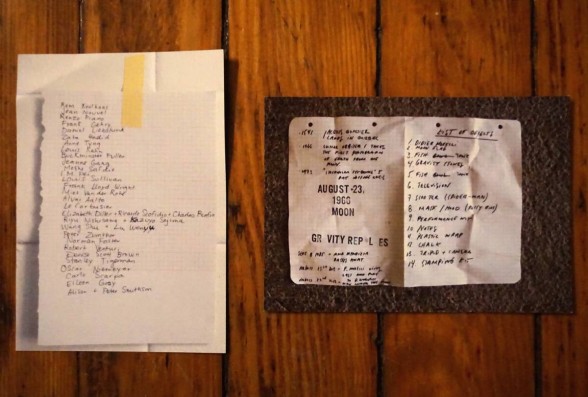
While the items on display do not always have a fixed, signified meaning, some of the General Objects are created with the intent of the artwork being absurd. Arièle Dionne-Krosnick and Didier Morelli dominate the “absurdists,” if you will, with their perplexing and mundane lists — Krosnick’s list of architects taped to a white background and Morielli’s list of assorted objects pinned to what looks like a cork board, each list scrawled on scraps of graph paper.
What is absurd about these hand-written lists is that the lists themselves are not on display. Rather the lists have been photographed on their backgrounds and the photos have been printed as postcards in a limited edition of 100 each. This glorification of the lists through photography and an editioning gives them a preciousness which seems non-sensical. I wanted my own copy of both photographs, but once I had them, I was dumbfounded by their obscure nature and my original desire for them.
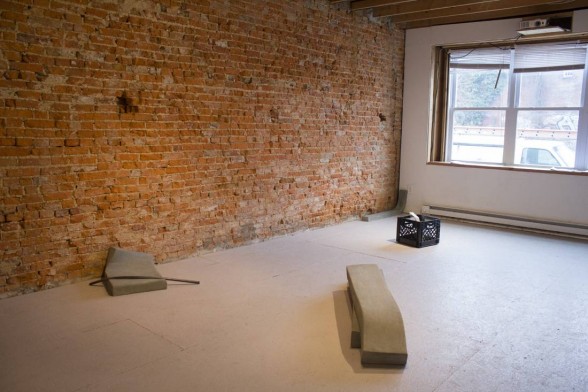
What truly separates Dionne-Krosnick’s and Morelli’s prints from the other absurd objects, like Jeff Prokash’s “concrete slumps,” is that because they are given away to the viewer, they are more than just an object with a vague importance–they are keepsakes. When the photographs are removed from FJORD Gallery, the lists are still meaningless and useless, but my keepsake now dominates my memory of visiting FJORD and the events of that day.
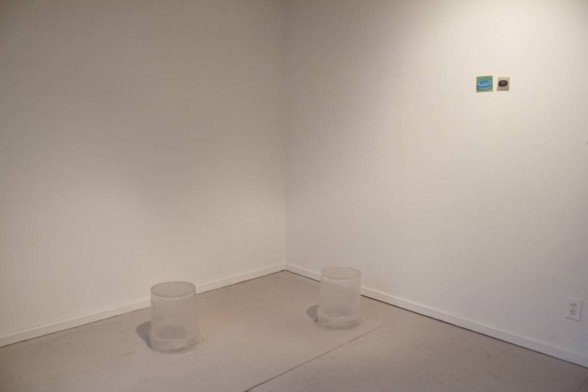
However, the weight of Prokash’s concrete masses demand note. Five of his “Untitled (Concrete Slump)” sculptures scatter FJORD Gallery. These sculptures’ visible weight acts as a foil to Elliott Mickleburgh’s milk crate filled with records and Joseph Grigley’s overturned five-gallon buckets. Despite their heavy weight, these masses lack a clear significance.
General Objects is anything but general; in fact, it is perplexingly vague and misleading. Prokash’s sculptures are so minimal in appearance that they are devoid of meaning, while Nilan’s “Fridge” hits you over the head. The exhibition runs the gamut of relationships between artwork and corresponding significance in a playful, articulate manner.
Contributors to the exhibition include Joshua Michael Demaree, Arièle Dionne-Krosnick & Didier Morelli, Jameson Doody, Joseph Grigely, Elliott Mickleburgh, Kyle Nilan, Betany Porter, and Jeff Prokash. General Objects was originally shown at Ballroom Projects, a live-in project space in Chicago.
General Objects is on display at FJORD Gallery from Feb. 6 – Feb. 28, 2015.



